Data – it’s the ‘currency of the future’
14 December 2018
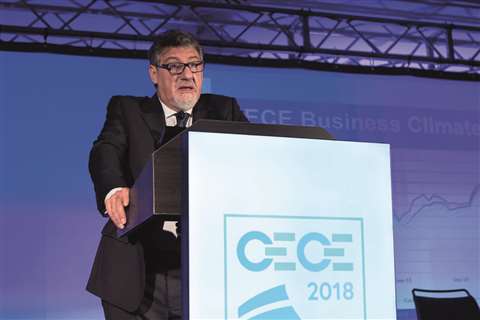
In the march towards Industry 4.0, data is being described as “the currency of the future”, but the ownership of that data is going to be one of the key questions as technology advances.
The currency observation was made by Enrico Prandini, president of CECE (Committee for European Construction Equipment) at the association’s Congress, held this year in Rome, Italy, which discussed the human-machine interface, and the how customers of construction machinery are changing.
It also took a look at the global reach of China in industry and infrastructure.
The CECE Congress, held every two years, was hosted by the Italian construction equipment association, UNACEA.
Ranging from European and global business leaders to leading exhibition organisers, close to 200 delegates met with policy makers and economic researchers to discuss the future of the industry, its road to digital transformation and the turning point in EU politics that is represented by the May 2019 European parliament elections.
The Congress heard that market conditions remained positive in Europe.
Prandini said, “There is justified optimism, but the skies are not clear yet.”
Variables
He pointed to variables including Brexit (the UK’s decision to leave the European Union), protectionism, the refugee crisis, US import tariffs, and changes in the political scenario.
“CECE has to work with the EC,” said Prandini. “Ours is a complicated sector that is not so easily recognised. Our first job is to be recognised, and the second is to get the EU to understand our business.”
CECE said that with roughly 1,200 companies, the European construction equipment industry employed 300,000 people and generated revenues of €40 billion.
It added that for the second Congress in a row, the event had taken place in a positive economic environment. After booming with a 15% increase in 2017, sales of construction equipment in 2018 continue to grow all over Europe and was on track for an estimated 5 to 10% increase at the end of 2018.
This is illustrated by the CECE Business Climate Index – a monthly measurement of the sector’s business confidence – which, despite a slight cooling-off tendency, remained at extremely high levels, demonstrating the overall optimism in the industry.
CECE added that this was confirmed by good conditions in the leading European markets in terms of public and private construction investments. In addition, there is an expectation of further growth from civil engineering and infrastructure, pushed upwards by a number of flagship projects, such as the Grand Paris scheme in France, and the HS2 high-speed rail line in the UK.
The market situation in the Congress’s host country, Italy, was also said to be showing positive signs, with a 25% sales increase in the first half of 2018 and an overall production output of €2.6 billion in 2017.
Across Europe, in terms of technology, the main driver for industry transformation was said to be digitalisation.
“Digital transformation will be the future,” Prandini told the Congress. “Data will be the currency of the future.”
The results of an eight-month long project into the digital transformation of the construction industry was presented for the first time at the Congress.
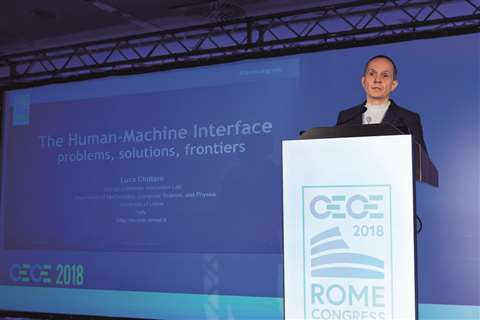
Prandini said, “This study is another step in CECE’s investment into digitising our industry. In the last eight months, a specialised team of consultants, supported by a small group including contractors and rental companies, have analysed how to facilitate the uptake of digital construction machinery in order to reap the benefits of data on productivity, safety and sustainability – our three major challenges.
“If there is one key takeaway from this project, in my opinion, it is the need to change the business models to unlock the value creation of data.”
Design
Luca Chittaro, professor of Human Computer Interaction at the University of Udine spoke to the Congress about the human-machine interface, and discussed how design can bring benefits to customers.
“What we are witnessing now is a change of different levels,” he said, saying that there was a move from physical instruments to screens and virtual instruments.
He said that for him, it was a case of déjà vu.
“We’ve seen it before,” he said, “in the 1990s – but we were speaking then about aviation cockpits. A modern aircraft is a computer that flies.”
He admitted the transformation was not small and that there was a need for retraining.
“HMI is human-machine interaction,” said Chittaro. “HCI is human-computer interaction. History has repeated itself. I saw this again and again, from medical devices to ovens and home appliances, from mobile phones to cars, other industries went through the same processes and made exactly the same mistakes.”
He said that for construction machines today, there was a risk of “rediscovering the wheel”, but he felt there was also a big advantage because construction could learn from the lessons of other industries, and so avoid the costly mistakes they had made.
“The first goal is to design the HMI to be simple to use – you don’t have to read a 100-page manual.”
He added that the interface should be intuitive; productive, in that it should make the process more efficient, not slow it down; reliable, “in the sense that I give a command to HMI, I expect it to understand it and execute my command”; and safe, “no one gets hurt because of confusing interfaces”.
The contractor’s view was put by Kjetil Tonning, president of FIEC (the European Construction Industry Federation), who told the congress that there was a need to find common ground.
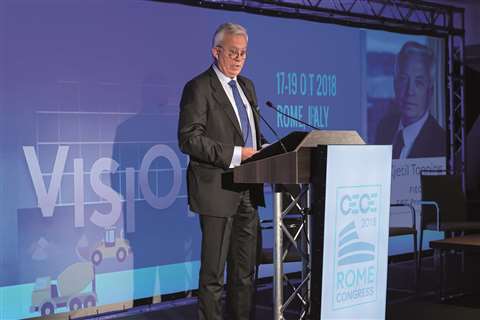
“We need to include the entire value chain,” he said. “Connectivity is man to machine and also machine to machine, therefore data has to be compatible.”
He pointed out that autonomous operation and AI (artificial intelligence) took this further, with machines able to anticipate, and to avoid accidents and downtime.
He told manufacturers that it was a chicken-and-egg situation, though – “we don’t know what your machine can do so can’t say what we want.”
Looking at health and safety, Tonning said that contractors wanted to move as close as possible to zero accidents, but were also concerned about information overload.
“Too many alerts can be counterproductive or distract in the cabin,” he said. “Relevant data to reduce accidents on site therefore needs a clear legal framework.
“There is no way back. If it is not ready or doesn’t meet our needs, we cannot fall back on old methods.”
A rental perspective was put to the Congress by Xavier du Boÿs, chairman of rental company Groupe Kiloutou, who said that the construction industry was changing now, with the importance of rental still growing.
He said that the total cost of ownership was key, and that, in rental, it was clear that they could not train each customer individually.
“We need silent machines, low carbon emissions, more hybrid and electric,” he said.
He told the construction machinery manufacturers, “You’re doing a good job but need to accelerate. The sooner the better.”
Referring to the BIM (building information modelling) revolution in the industry, he said it was important to share data in a common language.
“The real value is sharing the data,” he said. “Data belongs to all the players. We’re frightened to lose data, but we shouldn’t be. We keep data for ourselves but it’s a mistake.
“We have to improve collaboration. We don’t do nothing, but we don’t do enough.”
Communicate
Federico Pagliacci is development vice president at drilling and foundations equipment manufacturer Soilmec, part of the Trevi Group.
He said his company had, in 2005, started to develop a system to allow the operator to communicate with the rig and for the rig to talk to the remote control centre.
“There is a double aspect,” said Pagliacci. “On one side, the operator is not really happy to be controlled because we know when he switches on the rig, when he switches off the rig, how he is using the rig, how he is performing the rig maintenance.
“On the other side, he is very happy because we can help him remotely, so our rig works everywhere, in areas where there is no support. Remotely, we can enter the system, and when we enter, we tell him that we are entering so he can decide to let us see or not see, but we can adjust the machine, we can set something, we can let him learn how to use the system.”
Returning to the subject of design, Chitanno said it was a mistake to design with only “an AI mindset” – to try to build a machine operated by itself and never think about humans.
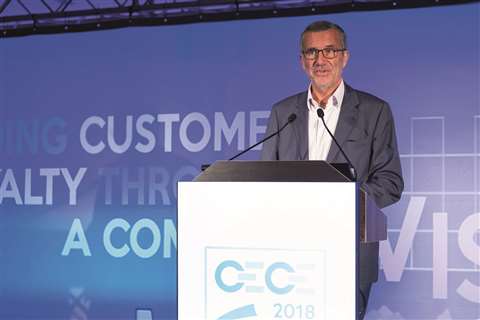
He said it should be broader, taking into account what humans and machines should do.
CNH Industrial Construction Equipment brand president Carl Gustaf Göransson told the Congress that the widely held image of the industry’s machines did not match the reality.
He said, “Among the various industries, our segment – represented by machines that work on building sites, in quarries and on our roads – is not immediately associated with the concepts of innovation and sustainability.
“Nothing could be further from the truth.”
He said, “For many years, we have been at the forefront in introducing state-of-the-art technologies on our machines, such as telematics management, and solutions that enable better performance and increased productivity through machine control systems.
“Furthermore, the continuous focus on reducing fuel consumption goes hand in hand with emissions reduction, testament to the significant efforts of all manufacturers, and Case, in particular, to produce machines that are increasingly efficient and beneficial for the environment in which we operate.”
CECE said that with EU regulatory development coming to a slowdown and Brussels preparing for an electoral changeover in 2019, the Congress was also the occasion officially to endorse the CECE Manifesto for the European Parliament elections.
Prandini said, “Our industry is an integral part of the construction value chain, a sector employing more than 18 million people, generating 9% of the EU GDP and responsible for building the places where Europeans live and work. We believe this importance is often overlooked by politicians and legislators and we want to change that.
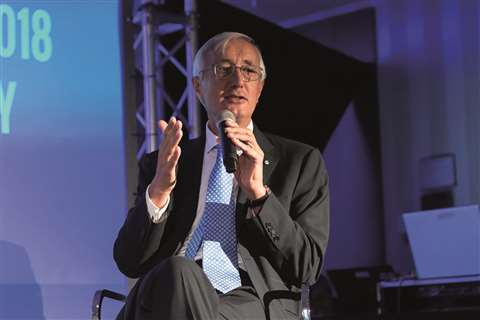
“This is why, we call on all candidates and future elected Members of the European Parliament to support a majority coalition mandate to the European Commission only if industry is shortlisted as a top-five priority of its political programme.”
CECE called on the EU to equip itself with a long-term vision and a strategy for a “proper industrial policy”. It said European industry continued to be innovative and was transforming itself thanks to digital technologies, but that global tensions and fierce competition, in the long run, risked limiting the competitiveness of EU manufacturing.
China
Another topic for the Congress was the subject of China, looking at the country’s global reach in industry and infrastructure, considering its potential as a manufacturer and the issue of Chinese contractors tendering and working in Europe.
The Belt & Road Initiative (BRI), also known as One Belt One Road, is a Chinese government development strategy covering infrastructure in Europe, Asia and Africa, including roads and rail, and sea routes.
At the CECE Congress the initative was brought up by Philippe Citroën, director general of UNIFE, the EU industry of rail manufacturers.
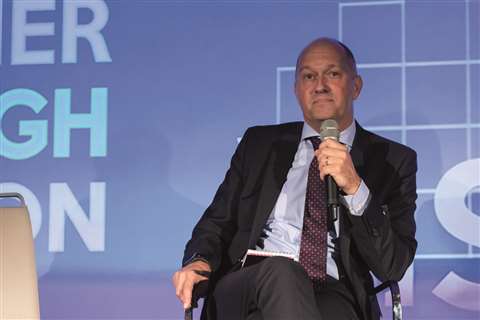
He said, “This initiative of the One Belt One Road is absolutely essential, and it could offer commercial and trade opportunities for Europe and companies – especially since the size and complexity of the project could make it necessary for Chinese companies to partner with foreign companies.”
He had concerns though about Chinese contractors working in Europe.
“We have state-owned companies in front of us benefiting from subsidies and facilities which are creating an increasing pressure on price, distorting competition, while European companies are tied by strict EU state aid and competition rules.”
He gave as an example the situation with the Pelješac bridge project in Croatia, which he described as “completely crazy”. He outlined what happened in Croatia in January this year.
“A consortium led by China Road & Bridge Corporation (CRBC) won an international race to build the Pelješac bridge, one of the largest infrastructure projects in Croatian history. This project is financed by 85% of EU funds, and the award decision was only made on price.”
He said that price was lower than other bids and that no other criteria were used by the Croatians. He suggested that the EU thought this was normal.
As a representative of a Chinese equipment manufacturer that has made the move into Europe, Howard Dale of Liugong and its Polish company Dressta, told the Congress that 30% of the company’s revenue came from outside China.
He explained that Liugong had entered the European market in 2010, and in 2012 acquired HSW and Dressta, which he described as a strategic investment in the heart of Europe.
“Europe is intensely competitive,” he said. “There are ten companies producing crawler excavators, therefore, for Liugong, we need to do something different.
“The way we have achieved that difference is we are now bringing in CKD (completely knocked down) kits from China, typically the cab, the electronics and hydraulics, we bring engines direct from the UK, and we are fabricating the heavy duty items – the booms, the arms – in Poland.”
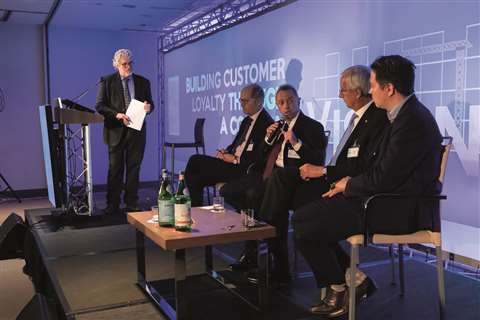
He said there were many differences in construction equipment from China compared to Europe, and to make Liugong competitive in the European market, the comapny has invested in research and development (R&D).
“We have our industrial design centre in the UK, and closer to home in Poland we have a team of engineers, and their job is to help us localise and customise the product that we designed originally in China, to suit the European markets.”
Small market
Soilmec’s Pagliacci told the congress that his world – foundations and drilling equipment – was really a small market.
He referred to a report from the Italian Trade Agency that was published in May, which said that China today was in the fourth stage of the evolution toward innovation and sustainability.
“The first stage was when the country was simply seen as a large market to sell products to,” he said. “In the second one, the country developed the capability to sell its own products abroad all around the world. In the third stage, they improved this capability with an extra injection of capital and know-how, and in today’s stage the focus of the Chinese government is on innovation as the main driver to allow the country to become a prosperous society in 2020 to 2025.”

He said Soilmec had sold its first unit in that market in1982.
“From 1982 to 2002, we sold about 10 to 15 units a year. That means 4 to 5% of our production. We had a representative office with Chinese staff and we had one Italian area manager that visited the country every one or two months. It was a large market to sell product to.
“In 2000, local manufacturers started to manufacture equipment for piling foundations. In 2009, they started to export these products abroad. Today the Chinese production in this type of equipment is about 600 to 800 units and they export 100 units abroad – mainly in the Far East area where the price is still one of the main drivers, and in Africa where a lot of Chinese contractors are working.”
He said that the price and the sales conditions locally proved impossible for the company, “so from 2002 to 2009 we sold seven units – total. Luckily, the Middle East was booming so we sold there.”
In 2009, he told the Congress, the company changed its business model. It opened its own facility with technical and sales departments. The technical department was in charge of the maintenance and the refurbishing of the fleet, and both departments had Italian staff.
“So we started to promote innovative technologies not available in the country for soil consolidation. And we started to promote the biggest unit we manufacture.
“From 2009, we started to sell again 10 or 15 units a year.”
He added, “Sooner or later, the Chinese manufacturers will manufacture the same equipment that we are selling now, and the innovative technologies will become standard technologies. In my opinion, the important thing in that country is to keep the gap with the local manufacturer.”
Made in China
Citroën from UNIFE said that as an association based in Brussels, it was necessary to think about the European strategy with regard to the Chinese government’s Made in China strategy.
“We are working hard now together with one or two other associations to put pressure on the Commission, Member States and the European Parliament to define a kind of European 20- to 30-year strategy – that is the first thing which is absolutely essential.”
He said the second issue, which was also essential, was to continue to invest in research and innovation.
“We always criticise what is going on in Brussels,” he said, “but to tell you the truth, in the past six years, Brussels has launched a massive research programme which was called Horizon 2020.
“Now they are planning to do the same for a programme called Horizon Europe which will be a programme of €100 million, so we have to continue to be at the forefront of research and innovation, and to define a strategy.”
Citroën added, “I see it is easy for a Chinese company to buy a European company, but it is almost impossible for our members to buy a company in China. We really need to continue to work with the Chinese on this issue for a level playing field, even if we know they have their strategy.”
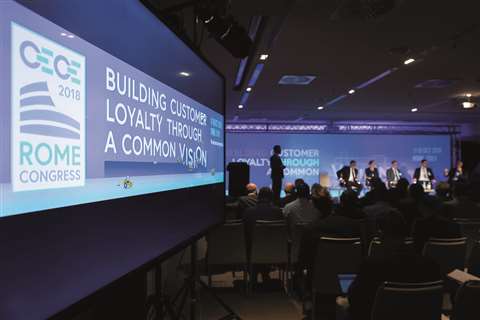
Discussing China on a more macro level, Jost Wübbeke of Sinolytics – a Berlin-based consultancy specialising in China and with a particular focus on China’s technological and digital transformation – was asked if Europe was progressing at a different speed to China.
He said, “What China is good at is to position itself strategically in emerging industries – industries which are not yet important, but will become important in the future.”
He gave the examples of electric vehicles and AI, adding that it had been the case with solar too.
“In Germany, we say China is at Industry 2.0, but Europe is going towards Industry 4.0 – so there is still a large gap.
“For the construction industry, I have the feeling there is also some innovation going on in Chinese companies, so I would say Chinese companies are really getting close to European companies.”
Liugong’s Dale said, “Competition is the mother of innovation and what we are seeing here is true competition, albeit coming from a different perspective to what we have been used to in the past – geographically.”
He predicted what the next technologies from China for the construction industry would be.
“It is not only the internet of things and machine controls systems. I believe you are going to see very quickly the rapid advancement of electric-powered construction equipment, and if you look at what has happened in China with the development of power cells and the use of power cell technology, you can join the dots and see where that’s going.”






